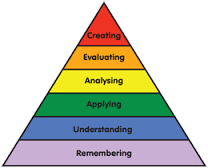The West Lothian Council (2016) makes many valid and founded points regarding the raising of attainment for students. These include effective questioning, improvement feedback, peer tutoring, peer evaluation, metacognition and self-regulated learning. I am going to delve deeper into the specific concept of peer evaluation.
Peer evaluation is described as a method of assessment in which pupils can collaborate and share their learning and original work. This allows for the opportunity of children to understand other’s work and understanding. They then are able to give and receive constructive criticism as well as, and importantly, praise for their efforts and good results. This would be very valuable to use in my practice as it allows for children to learn beneficial transferrable skills in communication. Furthermore, it develops in their social skills and assists in building their character. It is an optimum time for children to learn and value the opinions and understanding of others around them.
Within a classroom setting, I would need to ensure that the peer evaluation is still structured. This would allow me the opportunity to assess and evaluate how effectively children have grasped the learning taught to them. It would be a clear indication of the further learning for the children. While the children are also able to use this opportunity to consolidate and revise their learning.
It would also be good practice to assign groupings according to each child’s specific ability. The West Lothian Council (2016) state that initially children should be paired or grouped with children of a different ability. This allows for the weaker student to receive help from the stronger student. This grouping would need to be done carefully to prevent children feeling ostracised and losing motivation but rather feel encouraged and stimulated in their learning. The second time, children should be paired or grouped with children of the same ability. This provides opportunity for stronger children to also feel challenged and motivated to improve. Careful planning is required to allow children the self-belief and encouragement to succeed.
There are many contexts in which peer evaluation can be done such as check lists for paired or group evaluation, traffic lighting or ‘two stars and a wish’.
My personal favourite method of evaluation lies with ‘two stars and a wish’. It allows children to remain praised and motivated while providing them with some constructive criticism. Providing them with evidence of good work lets them continue with this. While giving them a ‘wish’ allows them to review and correct their errors and gives them the understanding of the requirements for future work and learning.
I feel peer evaluation must be practiced in the classroom regularly. It provides children with the necessary skills and learning which can be used throughout the curriculum. It also gives children the opportunity to share ideas and work collaboratively with other children. Having a variety of methods results in children having the ability to learn from their mistakes and improve their work.
West Lothian Council (2016) Raising Attainment – Improving Life Chances. Available at: https://education.gov.scot/improvement/Documents/sac43-raising-attainment-improving-life-chances.pdf (Accessed: 15.10.16)




